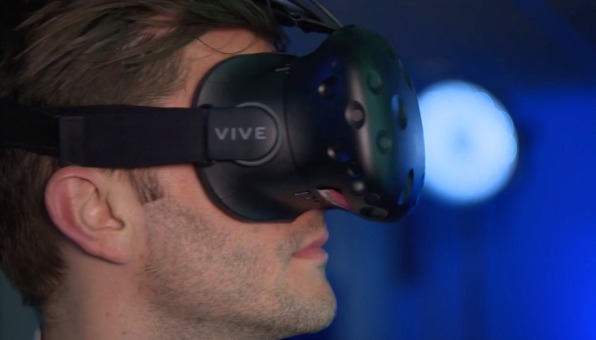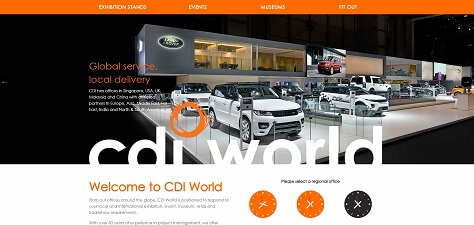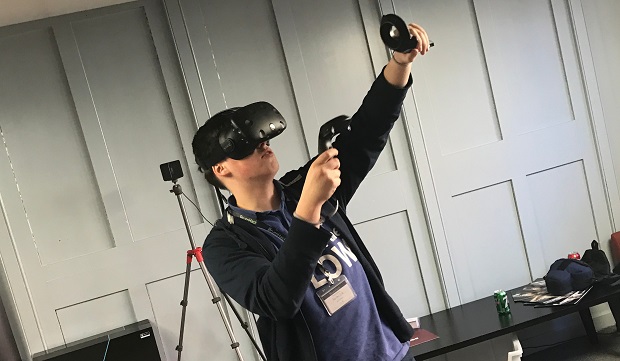
“Virtual reality is the future of gaming.”
We all know the line. And I don’t think anybody is going to dispute it. VR will change the gaming industry monumentally. The ability to physically become part of a game will not only revolutionise practical in-play potential, but also the emotional involvement a user shows to the game.
But that’s a story for another article.
What we want to focus on here is the less-documented uses of VR across other industries. VR is one of the most versatile technological developments in recent years. There are just so many possibilities for it. In fact, VR is already deployed by a number of different industries in various ways.
And what we’ve got here is some of the more intriguing uses. For instance, within healthcare and education. As well as how the future will be shaped by VR in everyday environments.
So, headsets on, CAVE systems ready, let’s enter the Matrix…
Versatile and Dynamic
As mentioned above, VR is a significant technological tool. It changes how our surrounding can be interpreted and adapted when we can become immersed within a virtual experience.
When you conceive an idea, there can be tricky logistical problems understanding how it will work. Let’s say an architect is designing a building and trying to work out how it will best fit together. The architect can’t be expected to keep building the structure and then knock it down every time it isn’t right. Creating a virtual version of the building would give the architect a real-world view in a practical three-dimensional sense. As opposed to not-to-scale drawings which bare no semblance in reality.
The challenges of understanding ideas that can’t physically be measured is therefore eradicated. The CAVE system is the most popular form of VR immersion. The CAVE, usually a 4-walled cube room, allows a user the best opportunity for interaction and telepresence. These involve instruments such as a joystick or data glove, and are known as haptics. They provide a user with the feelings of touch, to see how the environment responds.
Haptic feedback is a particular staple of smartphones, tablets, and, of course, gaming. But its potential, along with VR and CAVE interaction in general, is huge for so many industries.
What are these industries?
VR is already used throughout the automotive industry during the design process. Several prototypes can be made virtually and adjusted per the results. VR can simulate a driving experience too, including car speeds, handling, and interior comfort. Almost anything can be covered by VR for carmakers.
The entertainment industry is also a large beneficiary of VR. Audience engagement takes place by means of VR realism. Virtual applications that allow you to view a place or building have become increasingly popular recently. Headsets and 3D glasses incorporate a tracking system, so the landscape changes seamlessly as your head does. Therefore, helping to implement the realism.
However, it’s within the healthcare system that some of the largest and most important adaptations have occurred thanks to VR. Professor Albert Rizzo, who is a leading figure of VR in medicine, promotes the use of virtual reality exposure therapy. During this, a patient, usually one that is suffering post-traumatic stress disorder such as a soldier, will be exposed to a simulation of a stressful scenario. It is hoped by Rizzo they will begin to understand what specifically caused them stress as they talk through their suffering.
In a similar vein, phobias are sought to be conquered by virtual exposure therapy. One of the most popular VR apps is SpiderWorld, wherein through haptics the user touches a toy spider, but believes it’s the virtual (and very real looking one) in front of them. Allowing people to become more comfortable of things they are afraid of will give them a better chance of loosening the phobia when they come face-to-face in reality.
Away from deploying VR as part of therapy, it is now a crucial platform for training doctors and paramedics. The medical tuition available thanks to VR is world’s away from the PowerPoint presentations and lectures medicine students may be more accustomed to. Practical learning is the next step in education, offering the chance for students to be put into a challenging situation to test their abilities. But also for teachers to emphasise more easily what they’re teaching away from theoretical discussion.
Even classes such as first aid training will have a new angle. No more need for that plastic dummy and mouth wipes after CPR.
Gaze into the future
So, what does the future hold for VR? There’s already been big developments as explained. But how far can it go?
You’ve probably seen the advert for the Samsung S7, with the young girl’s dad at a concert filming it for her, whilst she watches on the headset. The next step to getting VR mainstream would be to stream events like concerts or sports matches live across social media. The user will get an immersive experience making them feel as if they’re more than just in the crowd, but actually part of the action.
These already exist in smaller circles, but not in the broad way required for it to impact on wider society. Perhaps in 20 years’ time, we’ll all be watching our favourite bands and sports teams from the comfort of our own sofas. Some people may not like the sound of this, but as history has taught us, things change and so do our social habits.
Dr. Elias Aboujaoude of Stanford University claims virtual reality may change our social needs. Aboujaoude believes via the internet and social media, we are now able to live full lives online. Adding that this can lead us away from the social norms we know. “We may stop ‘needing’ or craving real social interactions because they may become foreign to us,” Aboujaoude explains. “It doesn’t mean that they can’t make our lives better; it means that we, as a culture, are no longer aware of them and of their positive effects on our lives, because we are so immersed in virtual life and have been for some time.”
This isn’t necessarily a critique but it highlights the importance VR will likely have on our lives, and possibly human social existence, over the coming decades. Up until now VR has been known to the majority as a geeky tool, or even a novelty within the gaming world. If the forecasts are correct, this won’t be for long.
Conclusion
VR is going to play a massive part across pretty much everything; the military, schools, business, and construction. It’s already boosting concepts such as communication and employee efficiency within companies. In fact, your next meeting might be a VR chat with someone on the other side of the world. As tech-awareness increases, the tech itself will snowball until it’s here, on our beck and call. After all that’s what the internet did all those years ago, and whatever happened to that…
If you want any more information about VR, at stickee we have a dedicated research and development team with great VR experience! Contact them here.



